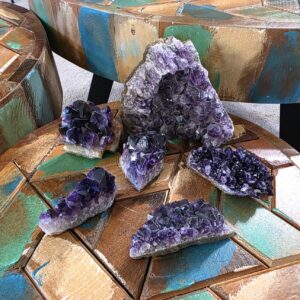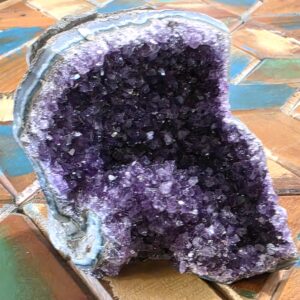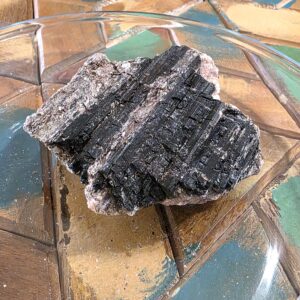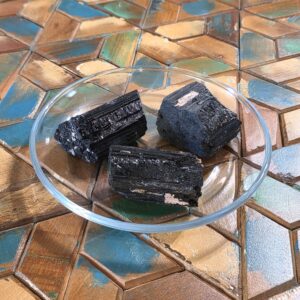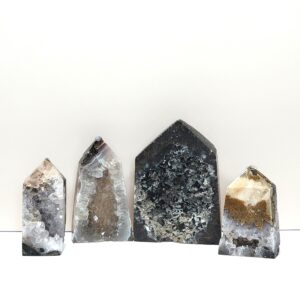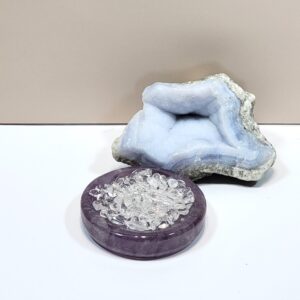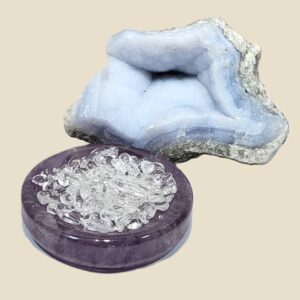Home » The Bayside Blog » Exploring the Lenormand
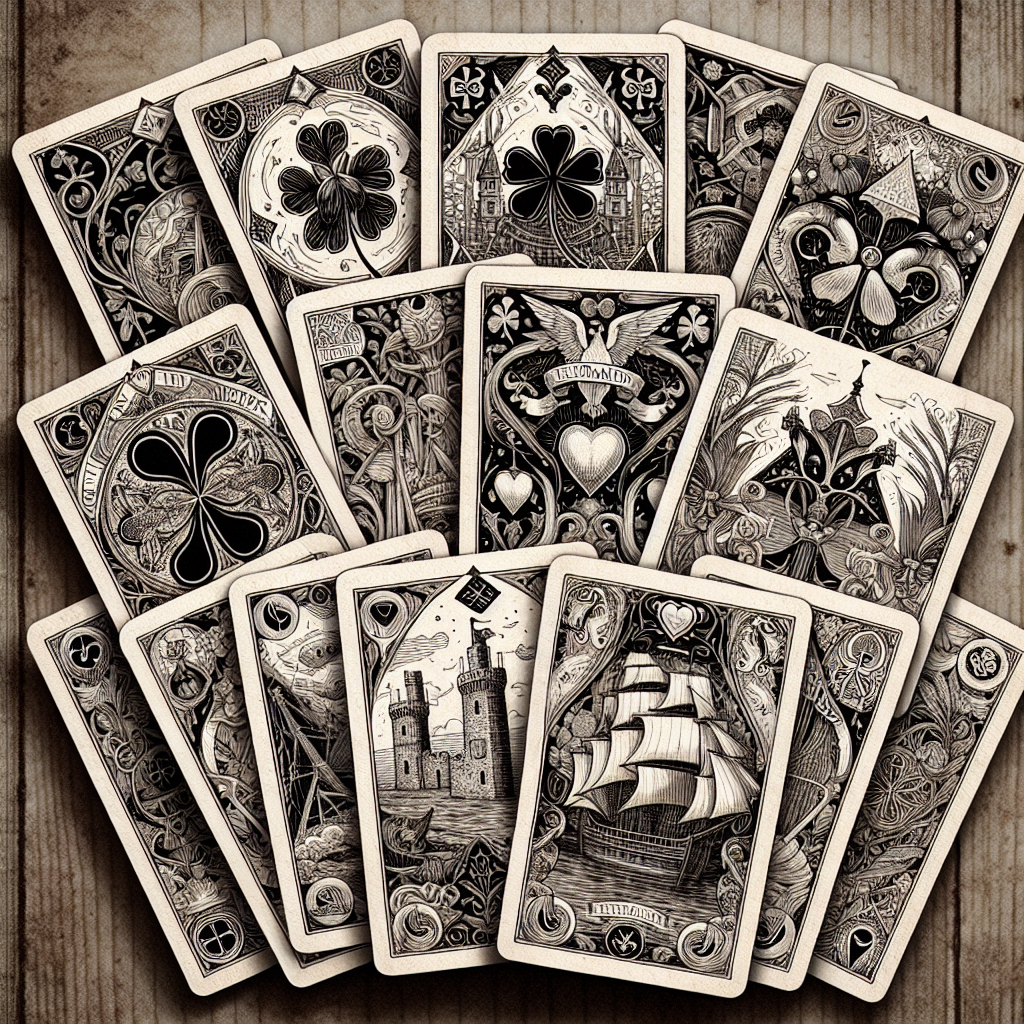
Have you heard of Lenormand cards? Have you ever used a deck? Almost everyone knows about Tarot, affirmation, and oracle card decks. Some are also aware of, and even perform, divination with traditional playing cards. Today, we are going to take a brief look at the debated history of cartomancy, and more specifically, Lenormand cards.
Cartomancy was first coined in the 18th century, and it was said to have started with traditional playing cards. However, some say that the practice can be traced back to the 14th century or so. While cartomancy is a term that covers all card-based forms of fortune-telling or divination, many use this term to mean the specific form that uses a standard playing card deck. Tarot cards did not really become popular until the later portion of the 18th century. Marie Anne Lenormand’s style of cartomancy gained popularity on the French scene around the early 19th century during the Napoleonic period.
However, there is some debate surrounding the popularity and creation of the Lenormand deck. Around the same time as Marie Anne Lenormand was reading her cards, Johan Hechtel created Das Spiel der Hofnung (Game of Hope) which many attribute to being the true origin of the petit Lenormand decks. He was a creator of games of chance. Interestingly, it is said that all these forms of cartomancy began as games of chance rather than forms of divination. The grand Lenormand was another version in which 54 cards were used. Today, the grand Lenormand deck is used less frequently, but is known to have some very deep symbology.
The most popular Lenormand cards used today are the petit Lenormand, with or without the playing card pips added to the deck. The pips, when added, do not correspond to the way the suits are traditionally used or interpreted in Tarot. While these pips are not needed to understand Lenormand, it is believed that they help the reader to gain deeper understanding of the reading. Also, since cartomancy is said to have stemmed from using playing cards, it gives the throwback feel of authenticity to the user. Ultimately, experimentation is the best way to get a feel for which deck suits you. You may even use both!
Earlier this week, I experimented with the Seeker’s Lenormand cards. I chose not to start with a deck that has pips. While I did learn cartomancy with standard playing cards early in life from my Eastern European friends, I have not connected with that form in a very long time. Also, the unique and lovely art of these intriguing cards called to me.
Before I get into my experience with the Seeker’s Lenormand, let me give a little bit of background into my history and knowledge of cartomancy. As mentioned, around 7 or 8 years old, my friends introduced me to traditional cartomancy using standard playing cards. From there, I practiced and used many forms of divination including the I Ching, runes, Tarot, etc. over the years. I have a natural gift for necromancy and have a few of the “claires”, and these gifts really drive my experiences with divination. To date, I do not have the Tarot meanings memorized. While I do have a great book to practice with, I have not yet practiced the exercises. In time, I do hope to have Tarot committed to memory, but for now, my unique connection to my Guides, Ancestors, and others is more than enough to help me find the answers I seek.
I typically use three different websites to feel out the Tarot meanings, as each has its own special nuances and perspectives. One of those three, Labyrinthos.co, has their own gorgeous decks, and provides a wealth of information for new users. They even have a free, email-based correspondence class that you can sign up for to learn Lenormand. In their blogs, they have a few how-tos regarding different ways to read the Lenormand cards. The method I chose uses a 3-card spread. After shuffling and laying out the cards, they describe how to read it like a sentence to get an easy, overarching message. Wouldn’t you know it—my 3 cards seemed to make a non-sensical sentence given my personal situation. The cards I drew were:
The idea is to read Card 1 as the subject of the sentence, Card 2 as a verb, and Card 3 as an adverb. So, in this case, it would read somewhere along the lines of:
“Luck/opportunity ends/dies abundantly?” (LOL!)
While there are probably better ways to read this as a sentence using their instructions, they weren’t coming easily to me in this case. Yet, ideas came to mind as I pondered ways to read this as a sentence. I saw abundance and luck surrounding an ending/death/loss. As was confirmed with what I call my Spirit Team, this was the best way for me to read this set of cards in reference to my life and this interpretation made sense to me.
Regardless of that confirmed meaning, I wanted to explore the second method listed in Labyrinthos.co’s blog post. This method is referred to as Chaining Pairs and Mirroring. The card pairs are read as 1+2, 2+3, and 1+3. To do this, I used the Labyrinthos.co link that gives information about the Lenormand combinations. It read like this:
This outcome happens to sound very similar to the way I read it in the last attempt, but in a different way. In this method, with these cards in this order, it seems to say that loss of luck and finances or something of value will be followed by luck in financial matters, e.g., that good tidings are on the way.
One could also layer deeper meaning on the reading to say something along the lines of the recent death of your old life is bringing in a new, prosperous life. One could only hope! Of course, I don’t claim to be a professional, and this was my first experience with Lenormand personally.
In the future, I will continue to work with these cards. I do have a deck of cards in mind for a Lenormand deck that includes the standard playing card pips. When I begin to work with them, I will share my experiences here.
What do you think about Lenormand cards? What are your interpretations of my cards? If you have used Lenormand, did you use the cards with or without pips and why? Share your experiences below!
Thanks for reading!
